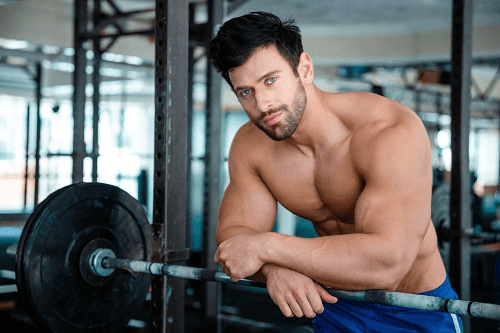While fitness in of itself is not an exact science, there are still some things that you will have to know and keep in mind when working out in order to get the most out of it. Although bodies differ from one another rather greatly in terms of needs, physiology and development requirements, there will always be some common ground that they all share.
Equipment and other gears can work your muscles in different varieties for a dynamic build of muscles.Like any good athlete and bodybuilder you will have to be familiar with this common ground in order to start maximizing your workouts and get a lot more out of it.
More...
The first thing that you will have to know is what muscle groups to work together when doing your workout routine.
Don’t worry too much because even though it might sound a bit strict and stressful, it is actually something that, in no time at all, will feel as natural as walking and breathing.
First Set of Combinations: The Major 3s

This is usually used by beginners to great effect because it’s simple to remember while at the same time engaging and rewarding to execute.
A combo like this requires 3 major muscles that are in close proximity to each other, preferably connected and interdependent of one another.
That is because, when executing the workout, you will power through the reps and push yourself by using the pent up power in one of the 3 major muscles while gaining the support and the contractions from the muscles in close vicinity to the muscle that you are actually targeting.
Here is an example:
Let’s say that you are working out your shoulder, which is in close proximity as well as connected to both the chest and the upper back. By intensely working out your shoulder, you are also engaging the back and chest a little. Once you are done with your shoulders, you can then move on to training your chest, which will fell a bit simpler and easier because of the shoulders that are already trained. The same goes if you do the upper back afterwards as well.
The end result is focusing not on a specific muscle but rather a part of the body which in turn help develop balanced muscular volume and power. Not to mention the fact that it makes muscle soreness a lot more manageable if you accidentally push yourself too much.
The best combinations here are as follows:
- Shoulders, chest, upper back
- Forearm, triceps, biceps
- Lower back, front abdominals, side abdominals
- Calves, glutes, hamstrings
One last thing to mention here is the fact that while you are working one of the 3 muscles out, you are warming up and relieving tension out of the other 2 adjacent muscles. This makes the recovery period go by a lot smoother, helps reduce the chances of soreness and promotes equal and balanced muscle growth.
Second Set of Combinations: 2 Big 2 Small

This is a set of combos that are used by more advanced athletes and fitness enthusiasts because of its inherent complexity, especially when we compare it to the much simpler Major 3s.
The 2 big 2 small combinations rely on a total of 4 muscles for every single combination, however this time we’re going to combine 2 major muscles with 2 minor muscles. A small drawback being the fact that it is slightly harder to focus on small muscles when training them without affecting other muscles in the process.
Overall the fatigue and power is slightly shifted away from the large muscles and onto the small ones, however from time to time you will be forced to alternate between intensities and the number of reps that you will be doing.
Here are a few examples of muscular combinations that follow the 2 big 2 small set:
- Chest & upper abdominals – Lower back & middle deltoid
- Upper back & side abdominals – Calves & upper pectorals
The number of possible combinations here is too large to list, not to mention the fact that you are encouraged to diversify the combinations as long as they follow a couple of general guidelines:
- The large muscle groups and the small muscles that you are alternating between must not form a compound range of movement with each other
- It is recommended that these muscles should be from different parts of the body and preferably not in close vicinity to each other
- While the weight used can vary, the intensity should remain the same regardless of what muscles will be engaged
Another small drawback is the fact that if you get hit by muscle soreness there’s no mitigating it. You will have to endure the full brunt of the soreness in both the large and small muscles. This will often times be so intense and severe that you will find it difficult to move if you go overboard with your training. This is also another reason for which it is not recommended for amateurs and newcomers to the world of fitness.
One last thing to mention here is that although this is the way in which most top athletes and bodybuilders train, it is not something that you should rush to get to. This is actually where you are most likely to get injured and overly-fatigued so take your time and build yourself up properly before pushing yourself further.
In conclusion
There is no specific combination that will allow everybody to train perfectly every single time. While combining muscle groups is a good way to go, expect to spend quite a bit of time finding your rhythm and building yourself up.
And as long as you keep a proper form, a proper range of motion and an adequate weight on the bar itself, the combinations of muscle groups that we’ve spoken about will help you out every single time.
In no time at all you will be bigger, stronger and more fit that you ever were before.

Hi there,
I’m Gregory Brown, chief editor at ConstructMuscles.com
I spend half of my time in this blog while the other half on being physical fitness trainer. Believing in the great benefits of bodybuilding and fitness to the body, I’ve been motivated to become a fitness enthusiast. It also was what gave me the self-confidence and assurance within myself both physically and psychologically.

